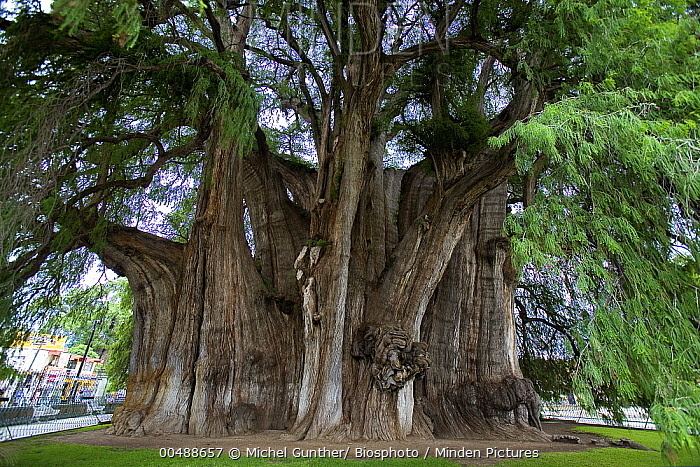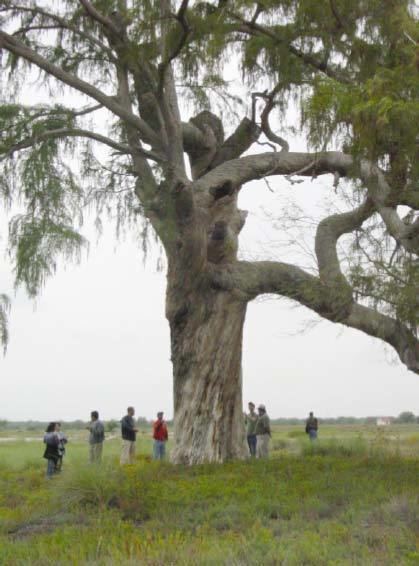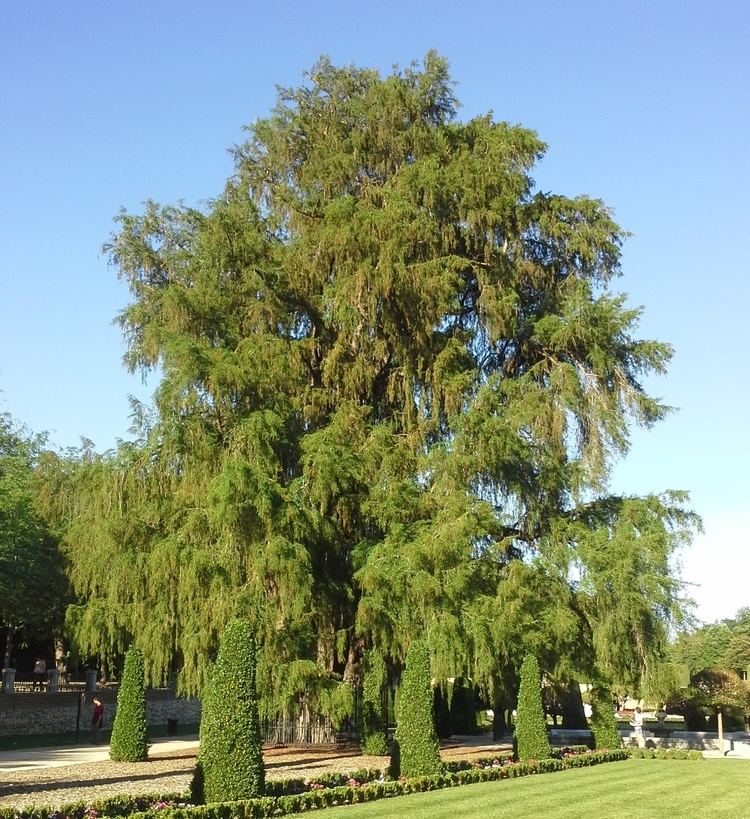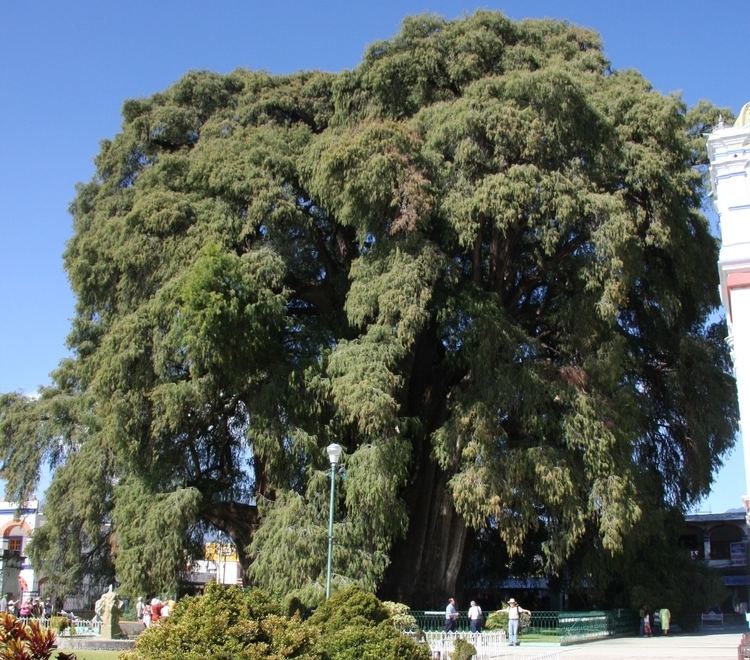Higher classification Taxodium | Division Pinophyta Scientific name Taxodium mucronatum Rank Species | |
 | ||
Conservation status Least Concern (Population stable) Similar Taxodium, Bald cypress, Taxodium ascendens, Taxodiaceae, Cupressus | ||
Taxodium mucronatum mexican bald cypress hd 01
Taxodium mucronatum, also known as Montezuma bald cypress, Montezuma cypress, sabino, or ahuehuete is a species of Taxodium native to much of Mexico (south to the highlands of southern Mexico), and also the Rio Grande Valley in southernmost Texas, United States as well as Huehuetenango Department in Guatemala. Ahuehuete is derived from the Nahuatl name for the tree, āhuēhuētl, which means "upright drum in water" or "old man of the water."
Contents
- Taxodium mucronatum mexican bald cypress hd 01
- Taxodium mucronatum chiapas
- Description
- Habitat
- Culture
- Uses
- References

Taxodium mucronatum chiapas
Description

It is a large evergreen or semi-evergreen tree growing to 40 m (130 ft) tall and with a trunk of 1–3 m (3.3–9.8 ft) diameter (occasionally much more; see below). The leaves are spirally arranged but twisted at the base to lie in two horizontal ranks, 1–2 cm (0.39–0.79 in) long and 1–2 mm (0.039–0.079 in) broad. The cones are ovoid, 1.5–2.5 cm (0.59–0.98 in) long and 1–2 cm (0.39–0.79 in) broad. Unlike bald cypress and pond cypress, Montezuma cypress rarely produces cypress knees from the roots. Trees from the Mexican highlands achieve a notable stoutness.

One specimen, the Árbol del Tule in Santa María del Tule, Oaxaca, Mexico, is the stoutest tree in the world with a diameter of 11.42 m (37.5 ft). Several other specimens from 3–6 m (9.8–19.7 ft) diameter are known. The second stoutest tree in the world is the Big Baobab, an African Baobab.
Habitat
Montezuma cypress is primarily a riparian tree, growing along upland riversides, but can also be found next to springs and marshes. It occurs from 300 to 2,500 m (980 to 8,200 ft), in Mexico mainly in highlands at 1,600–2,300 m (5,200–7,500 ft) in altitude. T. mucronatum is very drought-tolerant and fast-growing and favors climates that are rainy throughout the year or at least with high summer rainfall.
Culture

The sabino became the national tree of Mexico in 1910. The tree is sacred to the native peoples of Mexico, and is featured in the Zapotec creation myth. To the Aztecs, the combined shade of an āhuēhuētl and a pōchōtl (Ceiba pentandra) metaphorically represented a ruler's authority. According to legend, Hernán Cortés wept under an ahuehuete in Popotla after suffering defeat during the Battle of La Noche Triste.
Uses
Montezuma cypresses have been used as ornamental trees since Pre-Columbian times. The Aztecs planted āhuēhuētl along processional paths in the gardens of Chapultepec because of its association with government. Artificial islands called chinampas were formed in the shallow lakes of the Valley of Mexico by adding soil to rectangular areas enclosed by trees such as āhuēhuētl; they also lined the region's canals prior to Spanish conquest.
Ahuehuetes are frequently cultivated in Mexican parks and gardens. The wood is used to make house beams and furniture. The Aztecs used its resin to treat gout, ulcers, skin diseases, wounds, and toothaches. A decoction made from the bark was used as a diuretic and an emmenagogue. Pitch derived from the wood was used as a cure for bronchitis The leaves acted as a relaxant and could help reduce itching.
John Naka, a world-renowned bonsai master, donated his very first bonsai, a Montezuma Cypress, to the National Bonsai and Penjing Museum of the United States.
A linear grove is located in the main courtyard of the Getty Center Art Museum, thriving since 1995.
